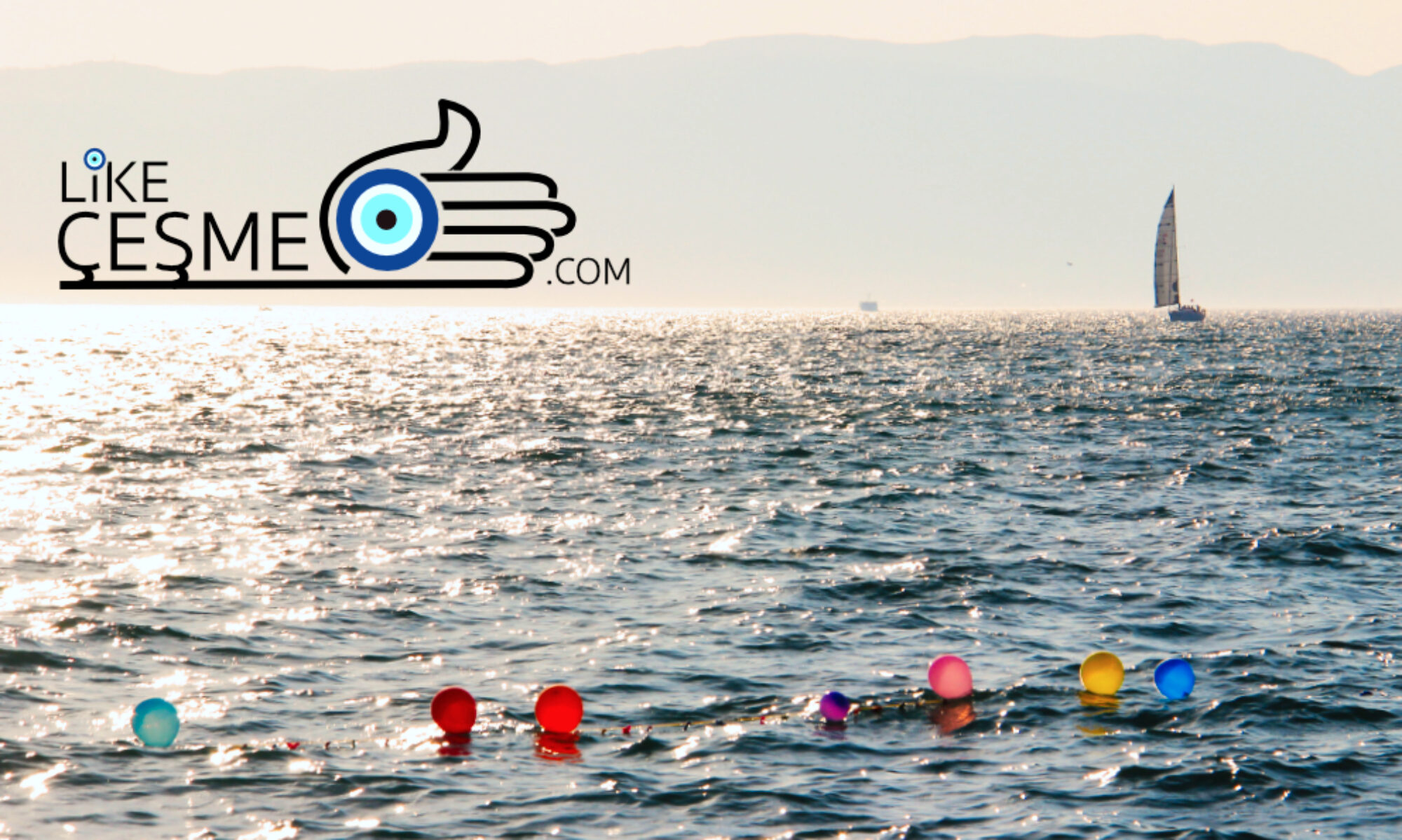Çeşme, known for its rich history, cultural heritage, and energetic support of the secular Republic, features a variety of statues that reflect its historical significance, artistic heritage, and modern identity. Here’s an overview of the range of statues you may encounter in Çeşme:
Statues in Çeşme:
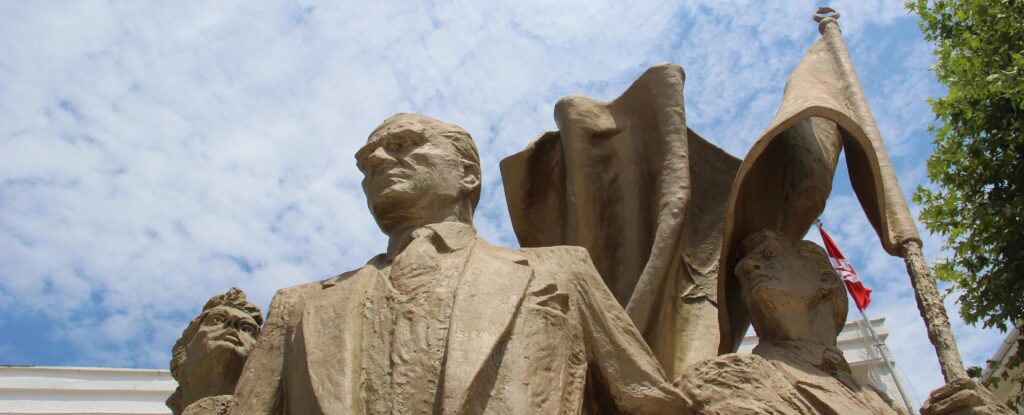
Mustafa Kemal Atatürk Monument (1881 – 10 November 1938)
Location: Cumhuriyet Meydanı, 16 Eylül, 3052. Sk., 35930 Çeşme, in front of Ziraat Bank.
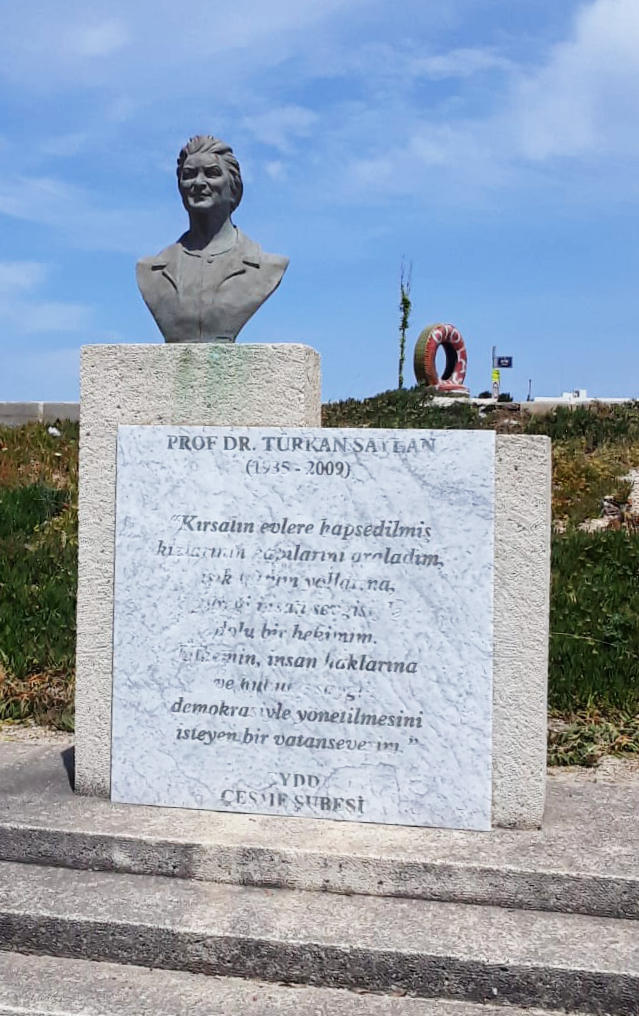
Prof. Dr. Türkan Saylan (13 December 1935 – 18 May 2009)
Dermatology doctor famous for fighting leprosy and for founding the charitable foundation: Çağdaş Yaşamı Destekleme Derneği ÇYDD (Association for the Support of Contemporary Living). She was also an academic, writer, teacher, and social activist – an essential figure in significantly raising the schooling rate of girls in Turkey. In 1986, she was awarded the International Gandhi Award and worked as a consultant in leprosy for the World Health Organization until 2006. The statue was erected in December 2009 in the small park dedicated to Dr. Türkan Salyan.
Location: Türkan Saylan Parkı 3118 Sk., 35930 Çeşme, adjacent to the CADDE Plus shopping mall.
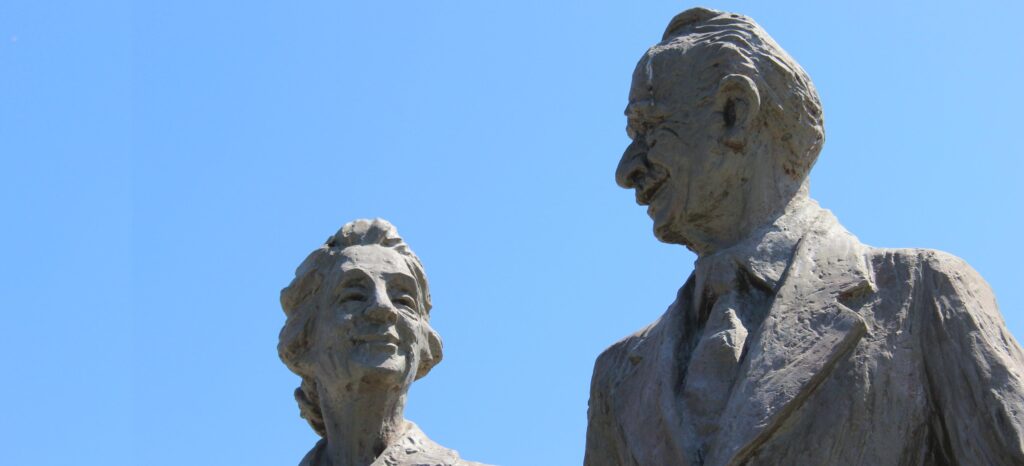
İsmet İnönü (24 September 1884 – 25 December 1973)
Location: İsmet İnönü Anıtı, 16 Eylül, 3048. Sk. 5a, 35930 Çeşme, on the waterfront promenade.
Mustafa İsmet İnönü was a Turkish general and statesman who served as the second President of Turkey from 11 November 1938 to 22 May 1950. He was born in İzmir (Smryna) and educated in Sivas in central Turkey. He joined the Ottoman Army in 1903 and served in the Balkans and Yemen. During World War 1, he was a Senior Colonel under Mustafa Kemal Pasha (Atatürk) on the Caucasus and Palestine fronts. Following victory in the War of Independence, he was appointed as the chief negotiator for the Turkish delegation. On 11th November 1938, after the death of Atatürk, he was elected the second President of the Republic of Turkey, serving in the role until 22nd May 1950. Despite pressure from the Allies & Axis, his diplomacy kept Turkey neutral during World War II. After defeat to the Democratic Party in the 1950 elections, he served as the leader of the opposition until 1961, when he returned to power as Prime Minister under short-term coalition governments until 1965.
Uğur Mumcu (22 August 1942 – 24 January 1993)
Uğur Mumcu was an editorial opinion columnist and investigative journalist, writing for the Cumhuriyet newspaper from 1975 until his death. He was a strong supporter of the secular republic and a campaigner against Islamic extremism and official corruption. He was assassinated by a car bomb planted under his car outside his house in Ankara in 1993. The statue was erected in January 2021, on the 28th anniversary of his death, in the small park also dedicated to him.
Location: Uğur Mumcu Parkı İsmet İnönü, 35937 Çeşme, on the Atatürk Bulvarı / 2122 Sk. roundabout near the entrance to Çeşme centre.
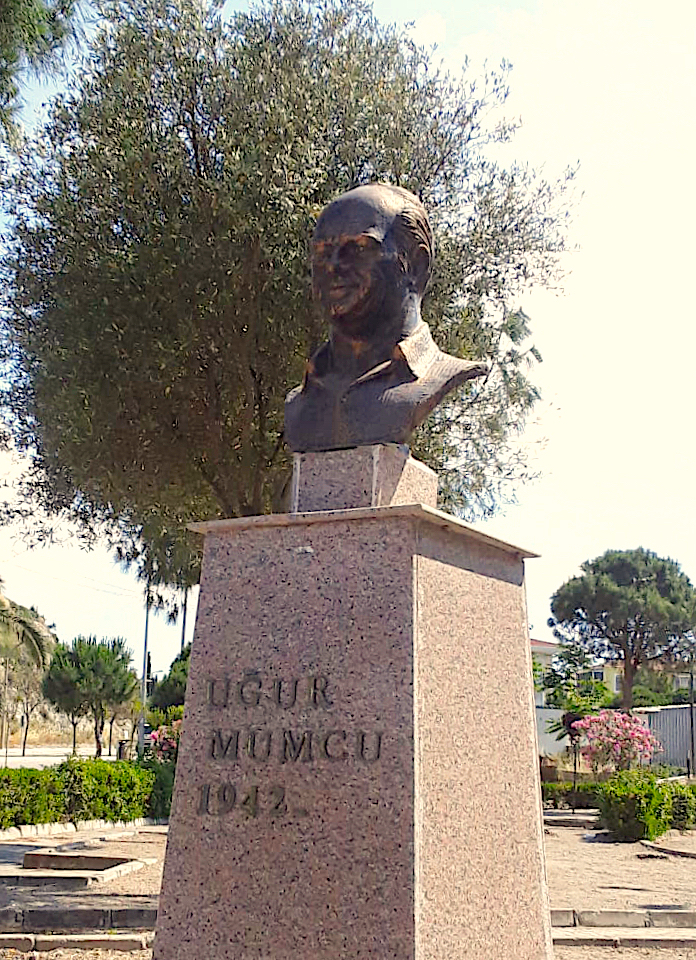
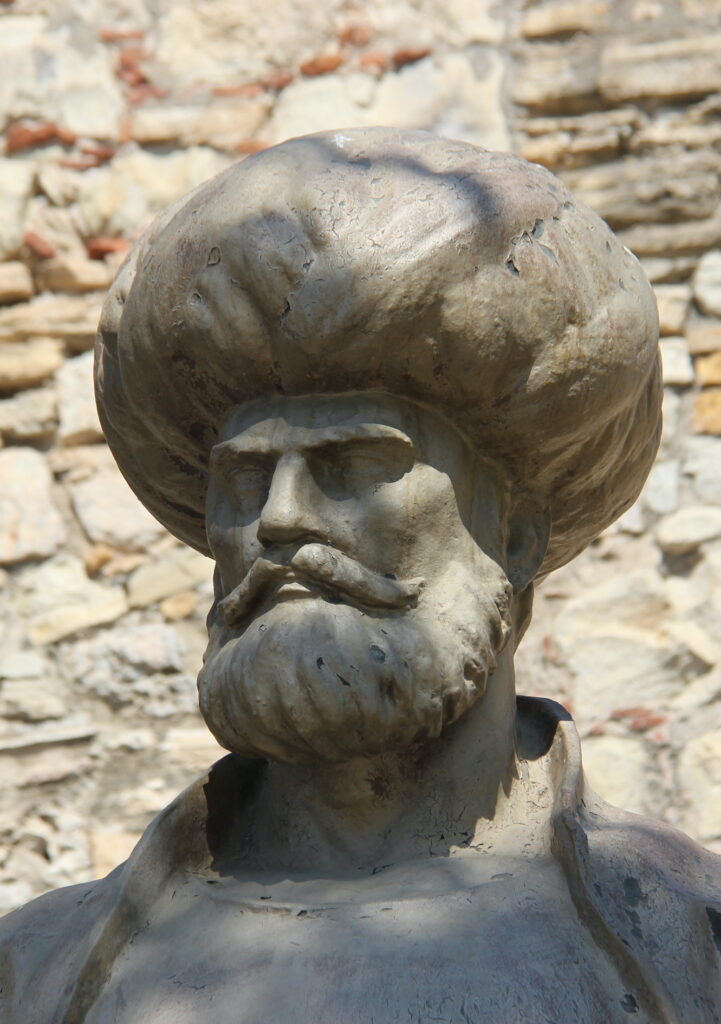
Cezayirli Gazi Hasan Paşa (1714 – 19 March 1790)
Hasan Pasha of Algiers was an Ottoman Grand Admiral, Grand Vizier, and navy general. Originally from Georgia, he was captured at a young age and sold into slavery. He was later set free and, after proving himself, went on to marry the daughter of his former owner. He joined the navy in 1761 and rose through the ranks from galleon captain to full captain by the outbreak of the Ottoman-Russian war (1768-1774). He was injured and lost his ship on 6th July 1770 at the disastrous ‘Battle of Chesme’ where much of the Ottoman fleet were destroyed inside Çeşme harbour. Following the crushing defeat by the Russians, four days later, he distinguished himself by recapturing Chios. For his heroics, was awarded the title of Vizier. He established the Naval Academy in 1773, the Ottoman navy was rebuilt, and he went on successful actions in Palestine 1775, Syria 1776, Albania 1779 and Egypt 1786. On 3rd December 1789, he lifted the siege and defeated the Russians in front of Izmir Castle, for which he was appointed Grand Vizier. The statue depicts Hasan Paşa with his domesticated lion named ‘Palabıyık’ (Moustache) that he bought while in Algiers and kept as a long-time companion. The statue was made by Haluk Tesonar (1942-1995) and erected in May 1975.
Location: Musalla, 1015. Sk. No:1, 35930 Çeşme directly in front of Çeşme castle.
Kaplan (Qaplan) Giray Khan I (July 1680 – November 1737)
Born on the Island of Rhodes, he rose to Khan of the Crimean Khanate in April 1707, however, a year later he suffered a great defeat when he lost in an expedition against the Kabartai Circassians and was disposed in November 1708, exiled to Rhodes. He twice more rose to Khan of Crimea between April 1713 and November 1716 (deposed due to revolts of the Circassians & Nogais), and November 1730 and August 1736 when he repelled the Russians after they reached as far as Ak Mejid (White Mosque), modern-day Simferopol. With health issues, he was exiled and died on the Island of Chios in November 1738 and was buried at his own request in Çeşme, in the courtyard of Muallime-i Sibyan just south of the castle. His tombstone was uncovered in 1990 and is displayed in the castle.
Location: Musalla, 1015. Sk. No:1, 35930 Çeşme/İzmir. In the park opposite to Çeşme Castle near the waterfront.
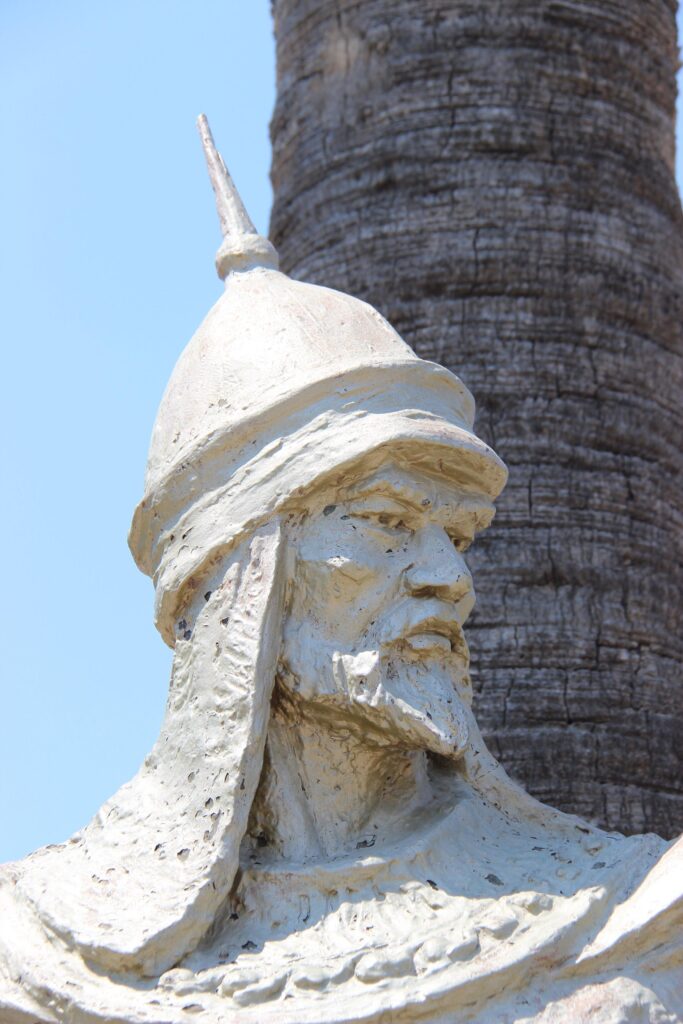
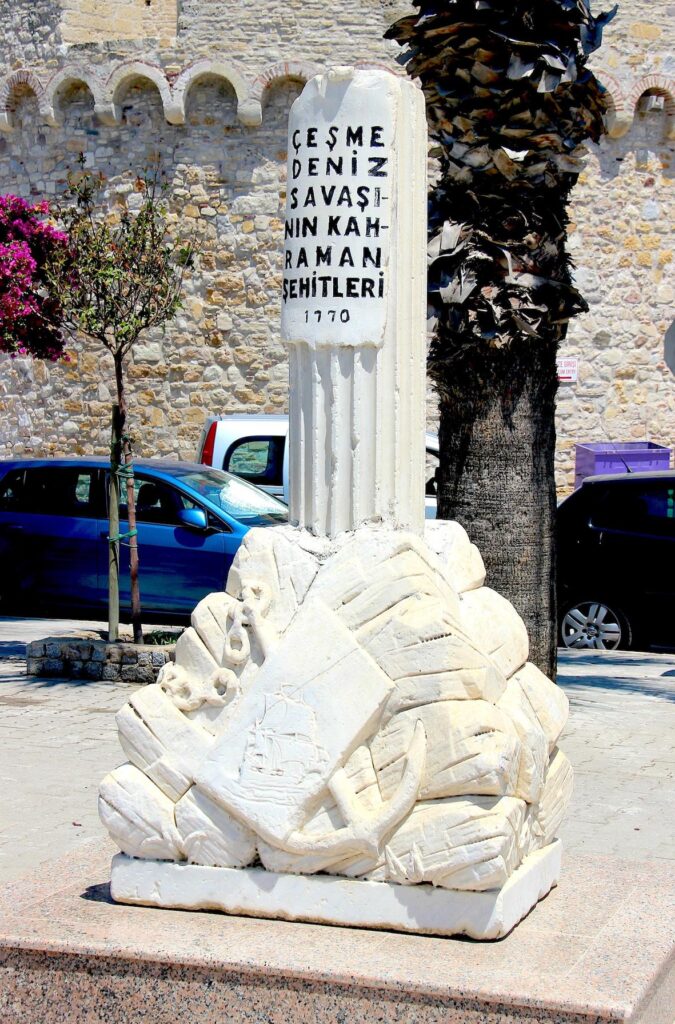
Naval Martyr’s Monument (5-6 July 1770)
Sculpted memory of sailors who perished in the Ottoman-Russian Naval Wars near Çeşme on July 5-6, 1770. Originally erected & exhibited in Çeşme in the 1950s, the monument was sent to the Istanbul Beşiktaş Naval Museum in 1972 but returned & restored to the Çeşme harbour gardens in March 2012.
Location: Musalla, 1015. Sk. No:1, 35930 Çeşme/İzmir. In the park opposite to Çeşme Castle near the waterfront.
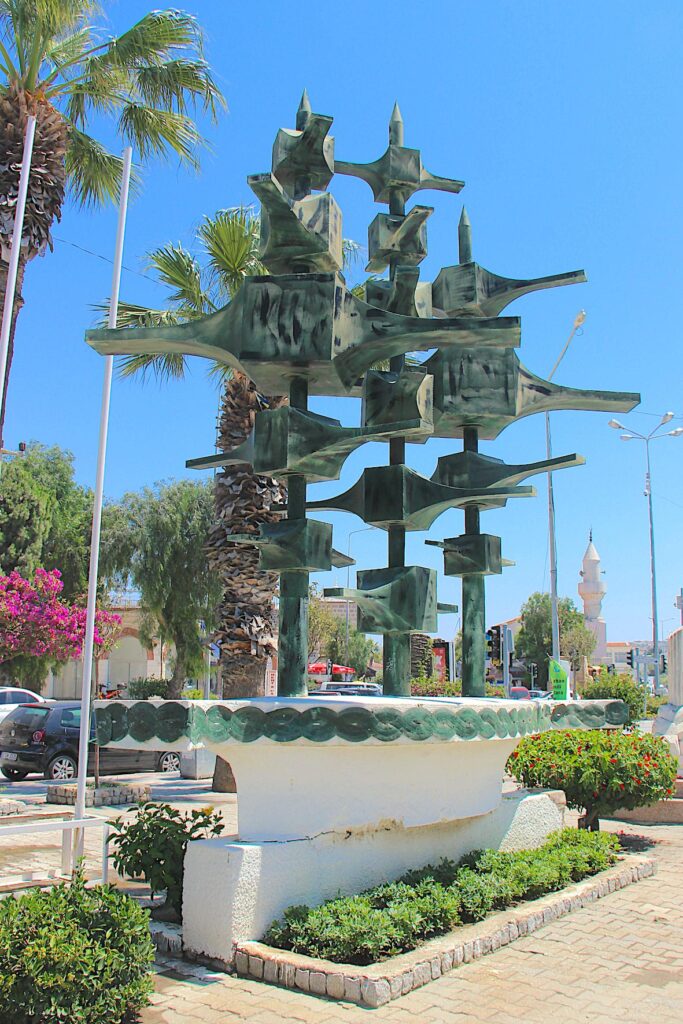
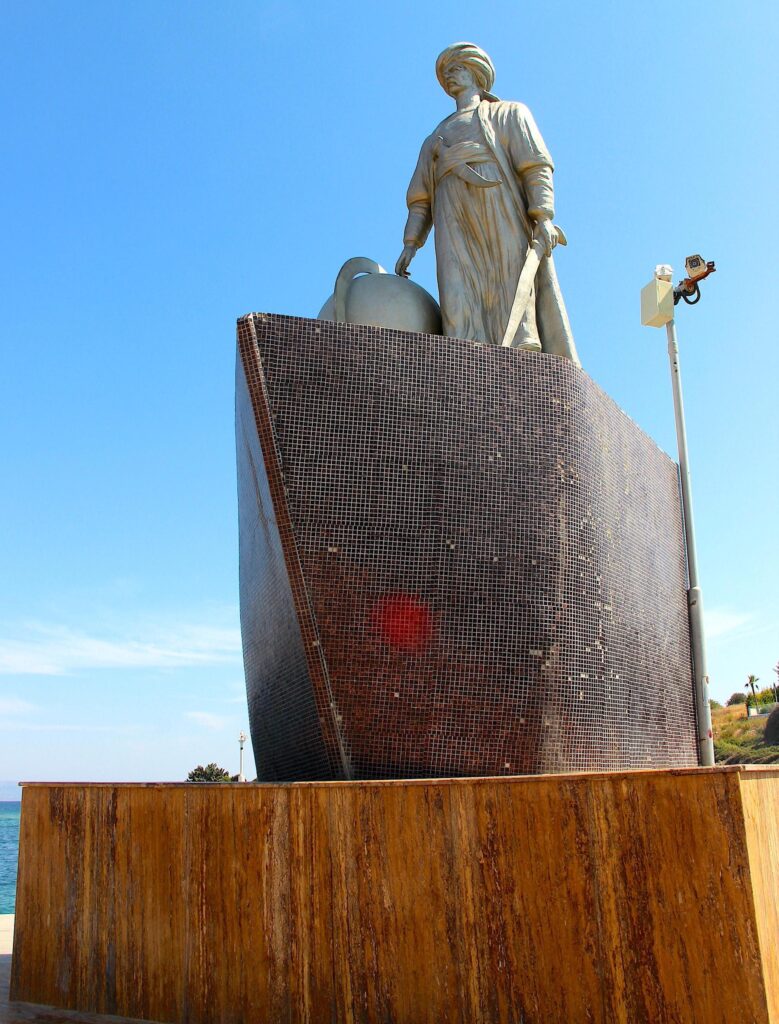
Dragut – Turgut Reis (1485 -23 June 1565)
Known respectfully as “The Drawn Sword of Islam,” Dragut was an Ottoman naval commander-in-chief and governor in the time of Suleiman the Magnificent. He commanded the Ottoman navy as the Admiral and Corsair, and with his many victories in the Mediterranean extended the empire to cover North Africa. He was appointed Bey of Algiers and Pasha of Tripoli. He was mortally injured at the Seige of Malta and was buried in Tripoli.
To avoid a sudden attack on the fleet during the winter months, the ships of the Ottoman Navy usually separated for maintenance in protected bays of the Aegean Sea. In the winter of 1525, a galley under the command of Dragut anchored in Dalyanköy. The bold and contemporary statue with Dragut and the world globe sits on the quayside pier at the entrance to Dalyanköy Harbour.
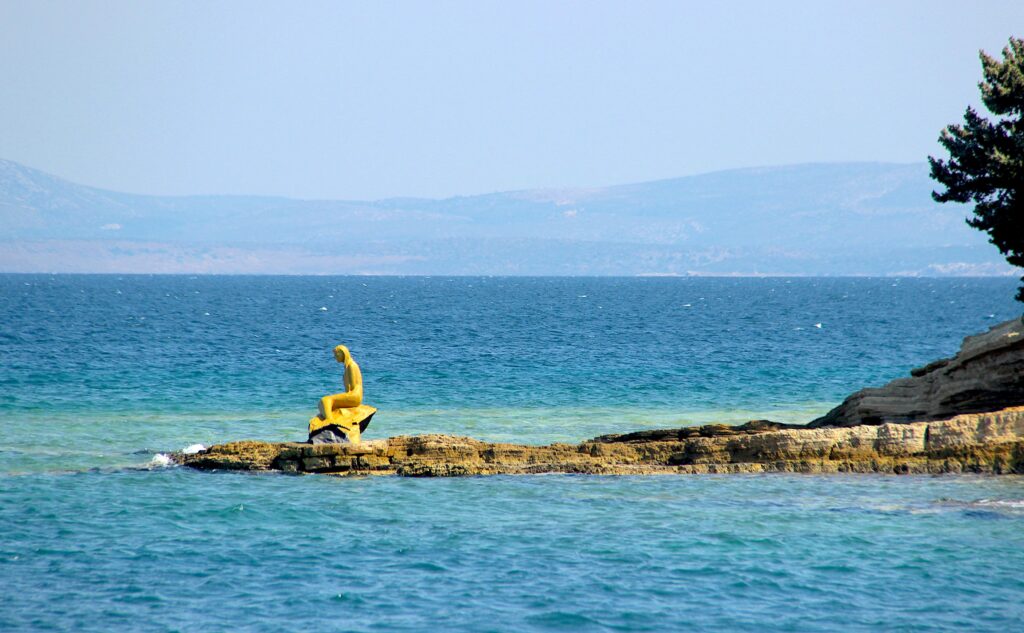
The Mermaid at Dalyanköy Harbour
Mermaid sculpture guarding the rocks protruding from the east side of the entrance to Dalyanköy harbour.
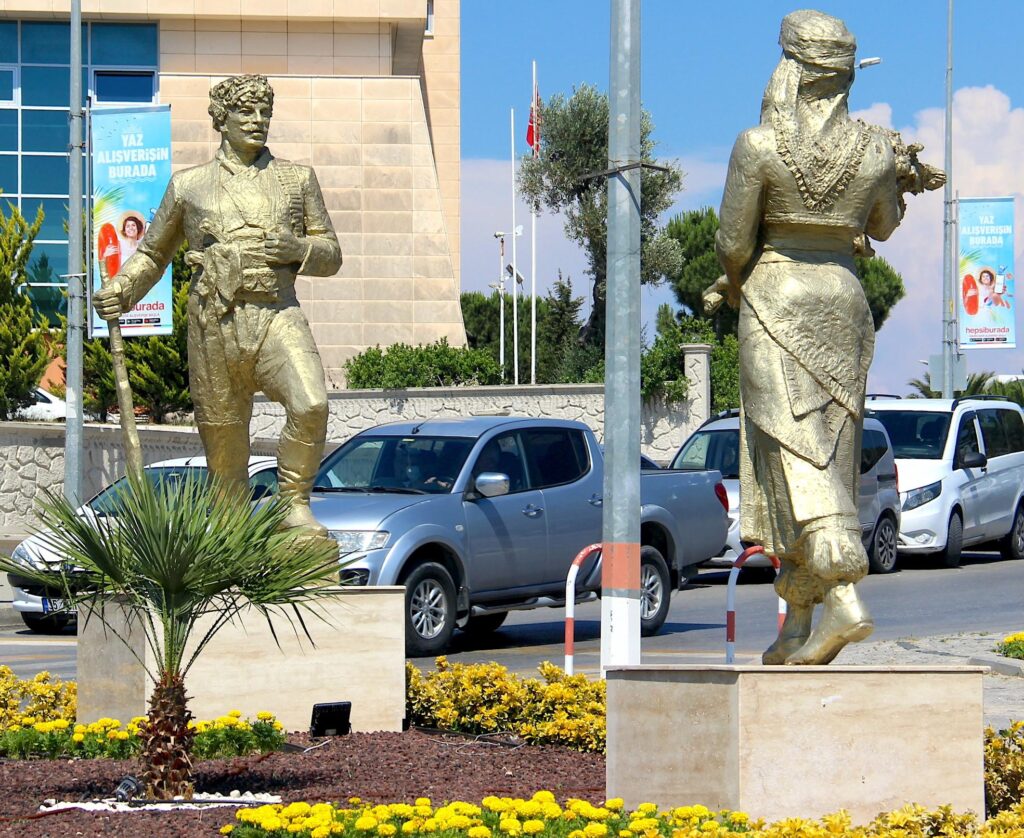
Details to be added
